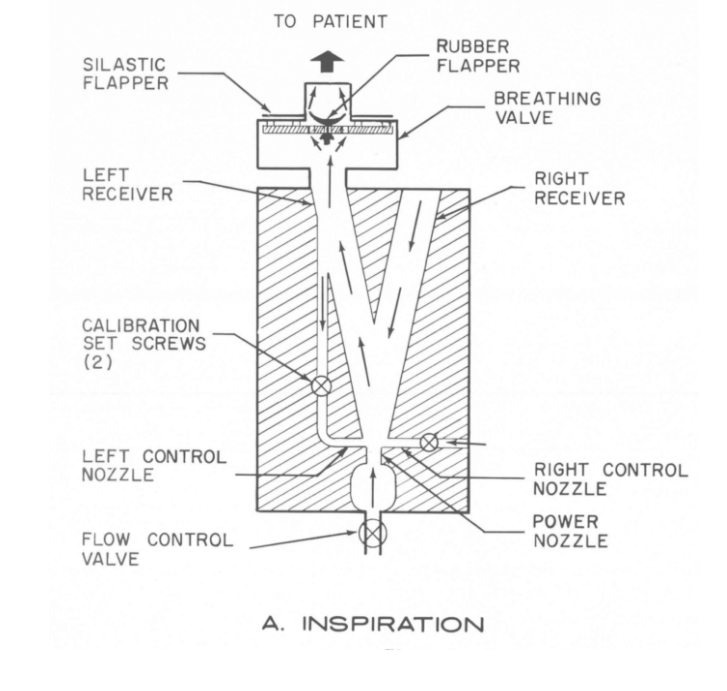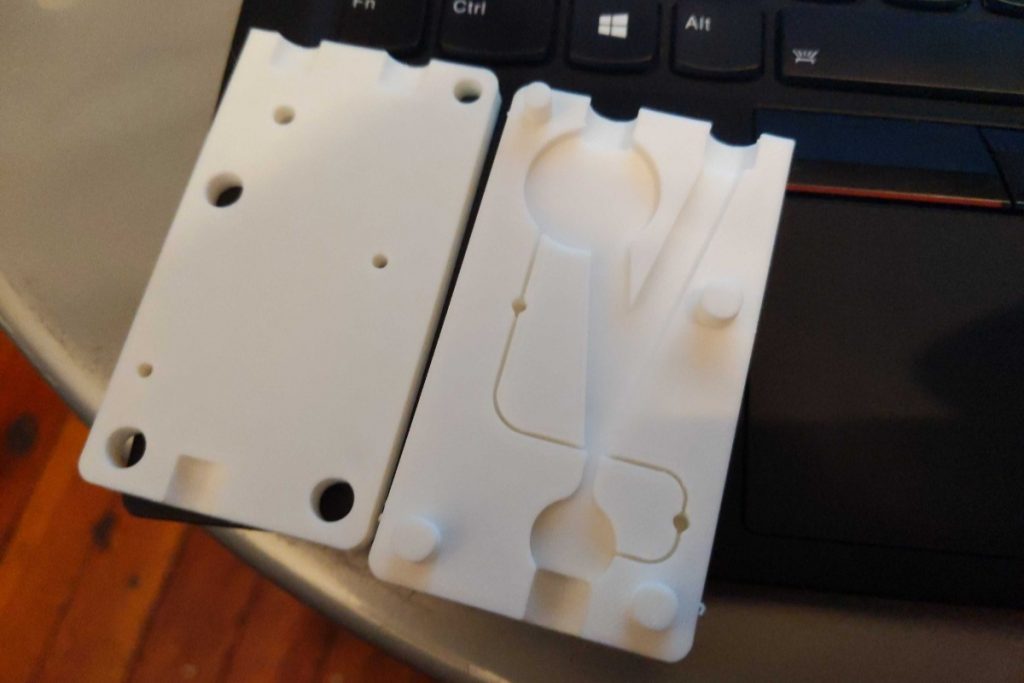With ventilators in short supply in light of the coronavirus pandemic, makers in the 3D printing community continue to combat the shortage through the use of their machines. The latest piece of 3D printable medical kit in development is the timing mechanism of an emergency ventilator based on a U.S. Army design from 1965.
The design is being realized and tested by a collection of engineers, product designers, and healthcare workers from Helpful Engineering, a group of over 12,000 volunteers working on manufacturing projects to help COVID-19 sufferers. Warren Koch, one of the project leads within Helpful Engineering, recently made a reddit post calling willing and able volunteers in the fluid dynamics community to contribute to the project.
The ARMEE ventilator
The ARMEE (Automatic Respiration Management Exclusively for Emergencies) ventilator is simply two plates of plastic sealed together, creating a series of internal channels that direct oxygen into a patient’s lungs. It is based on a tried-and-tested 1965 prototype from the U.S. Army, which already has some preliminary data. The ARMEE is actually just one piece of a whole ventilator system, but it is the piece in the shortest supply in healthcare systems around the world. It is the component that determines the timing and controls the switching between inhaling and exhaling – also known as the oscillator.

This particular oscillator does not house any electronics and runs purely off pressurized air that is fed into it through a valve. There are no moving parts inside so it cannot be worn down. Once the three calibration screws setting the PIP, PEEP, and inhale:exhale ratio are calibrated, it is completely autonomous. At that point, the only variable that can be modified is the intake pressure, determining the force at which oxygen is pushed into a patient’s lungs. Users have the option to initiate an inhale manually by inducing suction on the ventilator, otherwise it is completely controlled by the ARMEE’s calibrated rate.
While the device is designed to be 3D printable, it is still simple enough that a medium-sized injection molding facility could produce an estimated 10,000+ units per day. A metal machining facility would produce similar results, and it is this versatility and manufacturability that gives the device its value – it caters to the limited manufacturing facilities often found in underdeveloped countries.

What can you do to help?
Koch has organized a fundraiser to fund the testing and validation of the “highly-manufacturable ventilators”. Readers wanting to lend a helping hand are encouraged to donate what they can to the cause as it will aid in finalizing and mass-producing the ARMEE. Any excess capital will be used to fund another ventilator or medical device project to combat the coronavirus. Additionally, any readers with technical skills that they believe may be of use to the project are encouraged to sign-up here.
The 3D printing community has seen many initiatives being set up since the start of the coronavirus outbreak. As well as open source designs from the likes of Materialise and BCN3D, a number of 3D printing companies have been offering up their print farms to manufacture PPE for healthcare workers. Makers with time and resources to spare can help ease the load on healthcare facilities by offering their services to initiatives like this one.
The nominations for the 2020 3D Printing Industry Awards are now open. Who do you think should make the shortlists for this year’s show? Have your say now.
Subscribe to the 3D Printing Industry newsletter for the latest news in additive manufacturing. You can also stay connected by following us on Twitter and liking us on Facebook.
Looking for a career in additive manufacturing? Visit 3D Printing Jobs for a selection of roles in the industry.
Featured image shows the ARMEE ventilator. Photo via Warren Koch.


